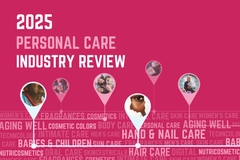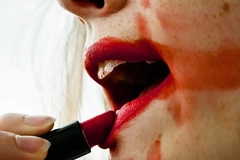Boots 2025 Beauty Trends Report reveals six upcoming industry shifts

Boots has predicted that key beauty trends for 2025 will include the rise of digitally native beauty brands, intergenerational beauty influence, elevated night-time skin care routines, and scent as self-care. The UK beauty retailer also forecasts a merging of health and beauty, alongside increasing consumer demand for a mix of luxury and budget-friendly products, according to its annual Beauty Trends Report, 2025.
The report draws on insights from over 16.9 million active Boots Advantage Card members, combined with trend analysis from Boots’ in-house beauty specialists, to identify six major trends set to shape the beauty landscape.
“Bolstered by market-leading insights, the Boots Beauty Trends Report reveals what should be on everyone’s beauty radar in 2025,” says Paul Niezawitowski, beauty director at Boots. He states that 2025 will be a “transformative” year for the brand, as it aims to offer customers a broader range of products and brands that cater to the forecasted trends.
Grace Vernon, head of global trends and cultural insights at Boots and No7 Beauty Company, emphasizes the industry’s accelerated evolution and that trends are emerging at a pace the sector has not seen before, specifically the growing focus on wellness.
From screens to shelves
Boots says the rapid rise of digitally native beauty brands is reshaping beauty retail. According to the retailer, one Korean skin care product sells every 30 seconds at Boots, which accounts for over 10% of the retailer’s everyday skin care sales. This indicates a growing demand for international products, as consumers are increasingly exposed to other market offerings online.
The report outlines that social media continues to drive product discovery, yet 94% of consumers still prefer in-store shopping for cosmetics.
This trend signals the blurring of boundaries between digital and physical retail spaces. Boots says consumers are demanding the convenience of finding online discoveries in brick-and-mortar stores as more social media-based beauty brands establish themselves.
Retailers are poised to benefit from this hybrid online-to-in-shop trend by expanding international product offerings popularized by social media engagement.
Intergenerational beauty influence
Boots reports that 39% of parents now take skin care advice from their children. Gen Zalpha — 10 to 15-year-olds on the cusp between Generation Z and Generation Alpha — spends over eight hours daily online and is driving new trends that influence purchasing decisions beyond generations.
Men’s interest in beauty is also growing, with a 14% year-on-year increase in men shopping for beauty products at Boots. This indicates a broadening market for men’s cosmetics as societal perceptions around male grooming evolve.
 Gen Zalpha spends over eight hours daily online, driving new purchasing trends.
Gen Zalpha spends over eight hours daily online, driving new purchasing trends.
Brands can adapt their reach by developing products that resonate with multiple generations and genders.
Science of slumber
Night-time skin care is evolving due to symptoms of tiredness becoming an increasing concern among consumers. Beauty shoppers have cited tiredness as the primary factor negatively affecting their skin.
Consumers are prioritizing sleep-optimized beauty routines and social media trends like #morningshed and #sleepmaxxing on TikTok are fueling a desire to maximize skin recovery during sleep.
The #morningshed TikTok beauty trend showcases users applying multiple layers of skin care products, such as face masks, mouth tape, and hair accessories, before bed and “shedding” all the layers of products in the morning to showcase supposedly improved skin and hair.
With nearly 125 million TikTok posts, #sleepmaxxing is a broad term for maximizing sleep quality through various hacks from wearing blue light glasses and weighted eye masks, to eating kiwis before bed and practicing gland meditation.
Boots’ report says cosmetics brand No7’s collaboration with the University of Manchester, UK, revealed insights on skin cell rhythms at night, emphasizing the importance of overnight repair products. Consumers are increasingly investing in skin care products such as pillow mists, overnight serums, and firming masks.
This shift highlights the growing link between beauty and wellness, with more consumers seeking holistic solutions that address physical and mental well-being.
Luxury and budget beauty
The 2025 Beauty Trends Report indicates that consumers simultaneously invest in luxury beauty products while seeking budget-friendly alternatives. In 2024, over a third of Advantage Card members shopped across premium and affordable categories, resulting in a 14% rise in premium beauty sales.
This trend reflects modern consumers’ willingness to mix high-end products with cost-effective options to balance indulgence with practicality.
According to the report, Boots’ own-brand skin care range has benefited, with one product selling every two seconds during the past year.
Scent as self-care
According to the trend report, fragrance is becoming a central element of self-care, with 78% of UK consumers believing scent can improve mental well-being..jpg) Boots' report indicates that 78% of consumers prioritize products that prevent the aging process rather than those that treat or mask the aftereffects.
Boots' report indicates that 78% of consumers prioritize products that prevent the aging process rather than those that treat or mask the aftereffects.
Boots’ data reveals that 42% of shoppers now purchase multiple fragrances instead of sticking to a signature scent, showcasing that fragrance can act as a form of emotional expression, mood enhancement, and identity.
The most popular fragrance notes purchased from Boots in 2024 were vanilla, bergamot, and jasmine — indicating consumer preferences for scents linked to relaxation. Retailers have the potential to capitalize on this by launching customizable fragrance options and wellness-driven scent collections.
Enter the Health Hackers
The beauty retailer says the convergence of health care and beauty is redefining beauty routines. Med spa-inspired treatments (blending medical and spa experiences) and “prejuvenation” (preventive measures to maintain youthful skin) are gaining traction.
The report indicates that 78% of consumers prioritize products that prevent the aging process rather than those that treat or mask the aftereffects, which drives demand for beauty technology devices. This resulted in a 536% increase in LED mask sales at Boots in 2024.
Products incorporating medical-grade technology are now more accessible, and retailers are focusing on educating consumers about the long-term skin care benefits these devices offer. The rise of at-home devices reflects consumer interest in replicating professional treatments at home.












